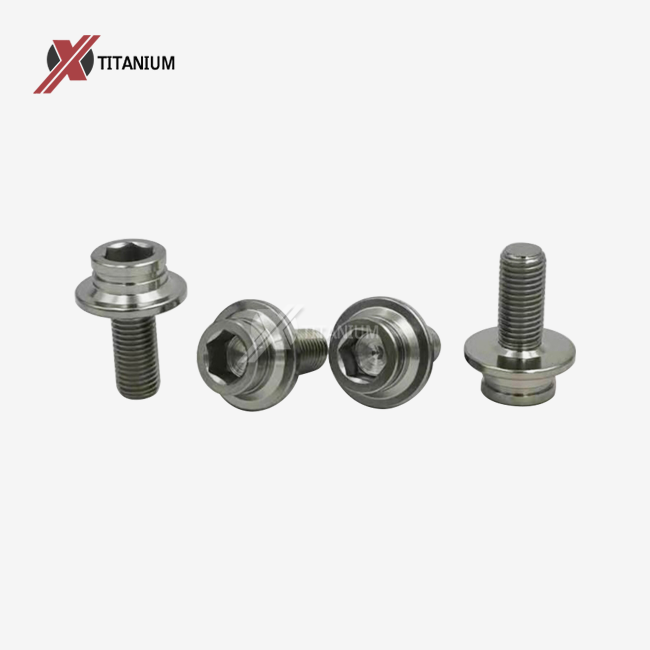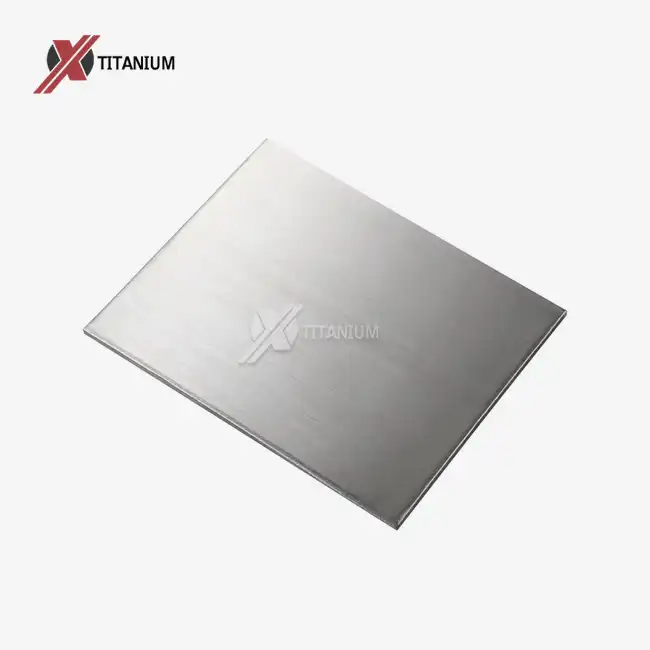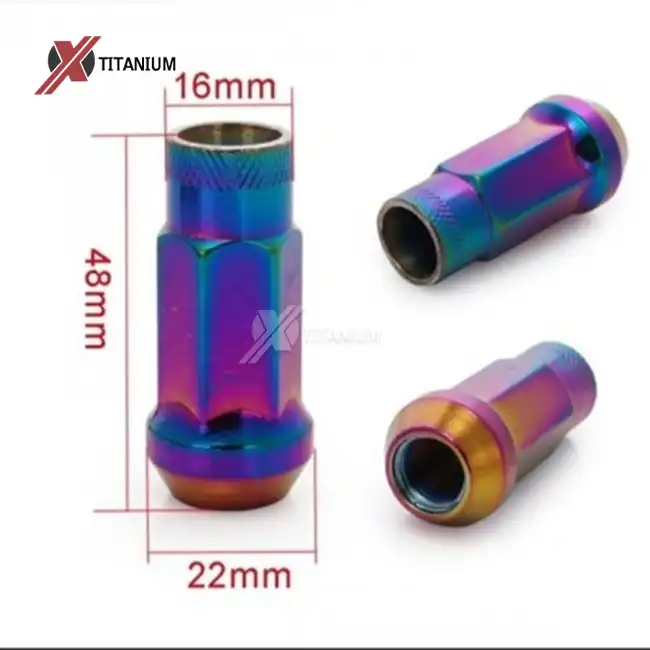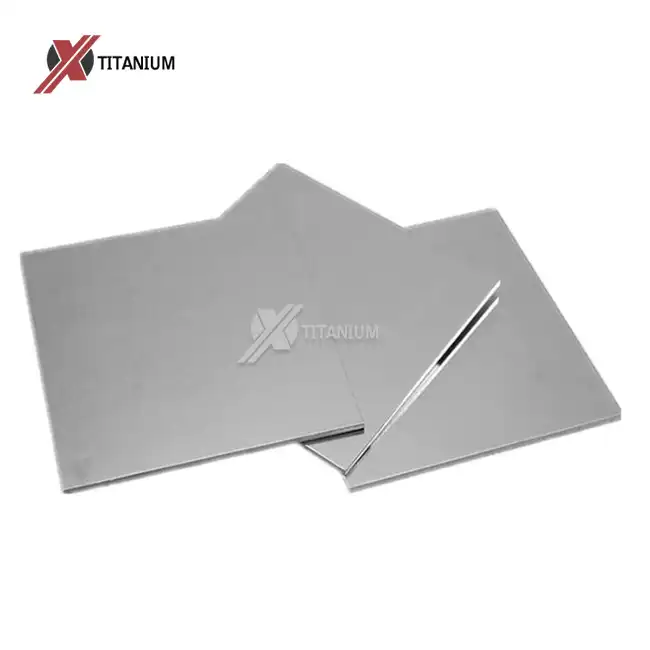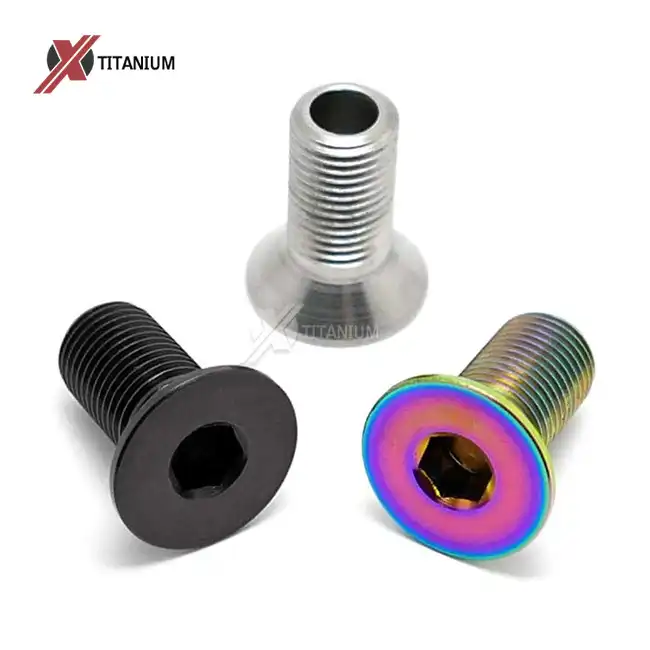The Durability of Titanium in Cycling Components
Understanding Titanium's Properties in Bike Parts
Titanium's unique properties make it an exceptional material for cycling components, particularly for high-stress parts like crank bolts. Its low density combined with high strength allows for lightweight yet robust components that can withstand the rigors of intense cycling. Titanium crank bolts, for instance, offer superior fatigue resistance compared to their steel or aluminum counterparts. This means they can endure repeated stress cycles without compromising their structural integrity, a crucial factor in ensuring the safety and performance of a bicycle's drivetrain system.
Longevity of Titanium Crank Bolts
The longevity of titanium crank bolts is a testament to titanium's durability. These components are subjected to constant stress during pedaling, yet they maintain their strength over time. The inherent corrosion resistance of titanium further contributes to their longevity, as they're less susceptible to degradation from exposure to sweat, rain, or other corrosive elements encountered during cycling. This resistance to weakening ensures that titanium crank bolts can maintain their torque specifications over extended periods, reducing the need for frequent replacements and enhancing overall bike reliability.
Factors Affecting Titanium's Performance in Cycling
While titanium is incredibly durable, several factors can influence its performance in cycling applications. The manufacturing process, including the grade of titanium used (such as Grade 5 Ti-6Al-4V for crank bolts), plays a crucial role in determining the component's strength and longevity. Surface treatments like anodizing or nitriding can further enhance titanium's already impressive properties.
Additionally, proper installation and maintenance are essential; incorrect torque application or neglecting regular inspections can potentially compromise even the most robust titanium components. Understanding these factors helps cyclists maximize the benefits of titanium parts like crank bolts in their bicycles.
Comparing Titanium to Other Materials in Bike Components
Titanium vs. Steel: Strength and Weight Considerations
When comparing titanium to steel in bike components, particularly in items like crank bolts, several key differences emerge. Titanium boasts a strength-to-weight ratio that surpasses that of steel, allowing for components that are both lighter and equally strong. This characteristic is particularly beneficial in cycling, where every gram saved can contribute to improved performance.
Titanium crank bolts, for instance, can provide the necessary strength to secure cranks firmly while adding less weight to the overall bike setup compared to steel alternatives. Moreover, titanium's superior corrosion resistance gives it an edge over steel in terms of longevity, especially in environments where moisture exposure is frequent.
Titanium vs. Aluminum: Durability and Fatigue Resistance
The comparison between titanium and aluminum in bike components reveals significant differences in durability and fatigue resistance. While aluminum is lighter than titanium, it generally falls short in terms of long-term strength retention. Titanium crank bolts, for example, exhibit superior fatigue resistance compared to aluminum ones.
This means they can withstand more stress cycles before showing signs of wear or potential failure. The ability of titanium to maintain its properties over time makes it a preferred choice for critical components that are subjected to repeated stress, such as crank bolts. Additionally, titanium's natural resistance to corrosion outperforms that of aluminum, which can be susceptible to galvanic corrosion when in contact with dissimilar metals.
Cost-Benefit Analysis of Titanium in Cycling
While titanium components, including crank bolts, often come with a higher initial cost compared to steel or aluminum alternatives, a comprehensive cost-benefit analysis often justifies their use. The longevity of titanium parts can result in lower replacement frequencies, potentially offsetting the higher upfront investment over time.
For competitive cyclists or those who demand the highest performance from their bikes, the weight savings and reliability offered by titanium components can translate into tangible benefits in ride quality and race results. Moreover, the peace of mind that comes with knowing critical components like crank bolts are made from a material that doesn't weaken over time can be invaluable for cyclists who prioritize safety and reliability in their equipment choices.
Maintenance and Care for Titanium Bike Components
Proper Installation Techniques for Titanium Crank Bolts
Proper installation of titanium crank bolts is crucial to ensure their optimal performance and longevity. Unlike steel or aluminum bolts, titanium fasteners require specific handling due to their unique properties. It's essential to use the correct torque specifications, typically ranging from 10-12 Nm for most titanium crank bolts. Over-tightening can lead to stress on the bolt, potentially compromising its integrity over time. Using a calibrated torque wrench is highly recommended to achieve the precise tightening required.
Additionally, applying a thin layer of anti-seize compound specifically designed for titanium can prevent galling and ensure easier removal when necessary. Proper installation not only maximizes the strength and durability of titanium crank bolts but also maintains the overall integrity of the crankset assembly.
Routine Inspection and Maintenance Practices
Regular inspection and maintenance of titanium bike components, including crank bolts, are essential practices to ensure their longevity and performance. While titanium is known for its durability, periodic checks can catch potential issues early. Inspect titanium crank bolts for any signs of wear, loosening, or corrosion, especially after riding in harsh conditions.
Although titanium naturally resists corrosion, cleaning the bolts and surrounding areas with a mild soap solution can remove any accumulated dirt or grime that might mask potential problems. If any issues are detected, addressing them promptly can prevent more significant problems down the line. For high-mileage bikes or those used in competitive settings, consider having a professional mechanic perform a thorough inspection of all titanium components annually.
Protecting Titanium Components for Long-Term Use
To maximize the lifespan of titanium bike components like crank bolts, implementing protective measures is beneficial. While titanium naturally forms a protective oxide layer, additional steps can enhance its resilience. For exposed titanium parts, consider applying a specialized titanium-safe protective wax or sealant to provide an extra barrier against environmental factors. This can be particularly useful for bikes frequently exposed to saltwater or other corrosive elements.
When storing or transporting bikes with titanium components, use padded covers or cases to prevent accidental scratches or impacts that could compromise the surface integrity of the titanium. By taking these precautions, cyclists can ensure their titanium components, including crank bolts, maintain their strength and appearance for years to come, maximizing the return on investment in these premium parts.
Conclusion
In conclusion, titanium's remarkable properties make it an excellent choice for cycling components, particularly for critical elements like titanium crank bolts or crank bolts. Its ability to maintain strength over time, coupled with superior corrosion resistance and favorable strength-to-weight ratio, positions titanium as a premium material in the cycling industry. While the initial cost may be higher, the long-term benefits in terms of performance, durability, and reliability often justify the investment for serious cyclists and enthusiasts alike.
By understanding the unique characteristics of titanium and following proper installation and maintenance practices, cyclists can fully leverage the advantages of titanium components in their pursuit of optimal bike performance and longevity. For more information on titanium products and their applications in cycling and beyond, please contact us at info@cltifastener.com or djy6580@aliyun.com.
